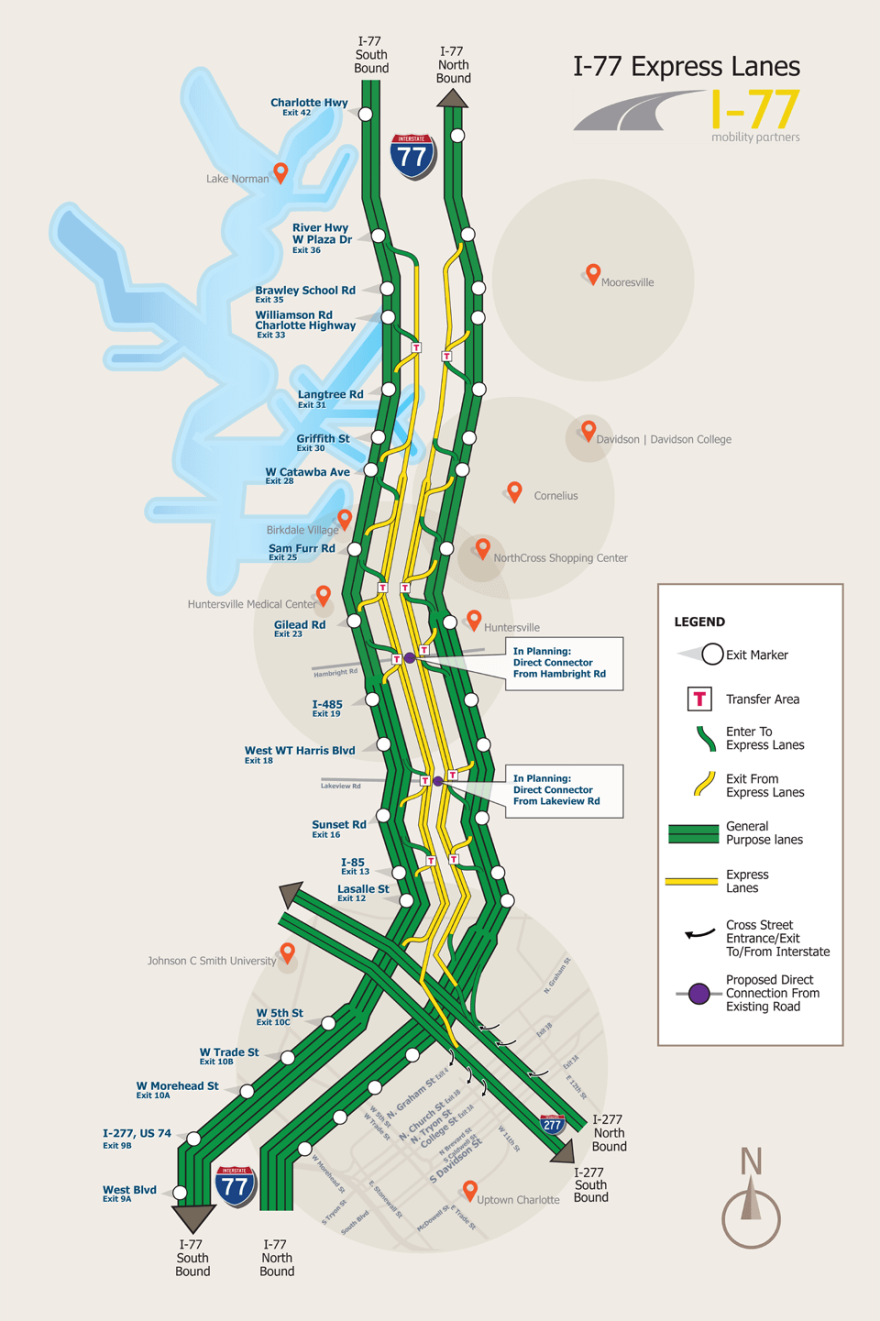The debate over optional toll lanes on I-77 from Charlotte to Mooresville has played out in court, in local elections, and at the Statehouse over the past few years. Now, the lanes are taking shape.
The median from Huntersville to Cornelius is now a mass of red clay, as contractors lay the groundwork to build 26 miles of toll lanes. They’ve set up concrete barriers, cleared trees, and now they're grading and installing drainage.
Near Exit 23 in Huntersville, chief infrastructure officer David Hannon says contractors are focused on the work - not the politics.
“We ignore the noise. We're here to build the project. And that's what we're focused on doing - delivering the project by the end of 2018,” Hannon says.
Earth moving will continue all summer to get the road ready for paving, Hannon says.

“You'll continue to see grading crews out here … just moving dirt .. hopefully toward the end of the summer you'll actually start to see some asphalt begin to be laid. The goal of the contractor is actually to have all of the work in the median done by the end of this year, in this area, in Lake Norman,” he says.
Final paving comes later.
Hannon's company, I-77 Mobility Partners, is a subsidiary of Spanish construction giant Cintra, which was the lone bidder for the $650 million state contract two years ago. (Four potential bidders initially worked with NCDOT.) It's managing construction, and eventually will run the toll lanes. Cintra created another company, Sugar Creek Construction, to actually build the project.
Right now, it's all about turning the once-green median into a foundation for toll lanes.
Hannon says workers have been building up or excavating the dirt so it’s all at the same elevation. Once the grade is even, they'll do what's called lime stabilization, to create a dark, solid road bed.
“It also protects against moisture getting down into the subgrade and just helps the road last for a longer period of time,” Hannon explained. “It's very common with the clays here in North Carolina to put that down before you start putting the road bed.”
Most construction is happening in the median. When workers need to close a lane, it's at night, says Jean Leier, spokeswoman for I-77 Mobility Partners.
“Monday to Thursday they can only be from 10 p.m. to 5 a.m. ... and going into the weekend, let's say the lane closure starts at 10 p.m. Friday ... it can go to 9 a.m. Saturday,” Leier says.
Later this year, work begins on the project’s southern section, from I-277 (Exit 11) in Charlotte north to Huntersville. That includes adding toll lanes and new ramps to connect them directly to I-277.
Once the roadbed is ready, the road will be repaved. Then workers will install tolling equipment. There won’t be any toll booths, just equipment to read the radio transponders in drivers’ cars. Accounts connected to the devices will be charged automatically.
How much still isn’t known. Public meetings on toll rates are planned in 2018, a few months before the toll lanes open.
Tolls will vary according to congestion in the regular lanes. You'll pay less when traffic is lighter and more when it's busy.
A year ago, the I-77 Mobility CEO Javier Tamargo told WFAE the company estimates drivers will pay between $1 and $4 to drive a 10-mile stretch. For the entire 26 miles, he said, drivers will pay 10 to 40 cents a mile. But, he added, "The way we see this project working is not all the users will use the (toll) lanes for the whole length of the trip."
State Transportation secretary Nick Tennyson says tolls are now an important funding strategy for the DOT. They’ll pay for projects the state otherwise can’t afford because of stagnant state and federal funding.
“In the case of the Charlotte region, the choice to use the optional toll lanes I think presented an opportunity to that metropolitan planning organization to try to make a long-term strategy of mobility based on a network of those facilities across the region. And that's why that project is in place today.
This is the first of several in the Charlotte area. DOT plans call for toll lanes on US 74, I-485 in south Charlotte, and I-77 in south Charlotte.








